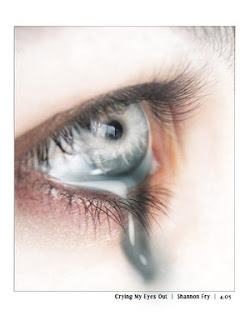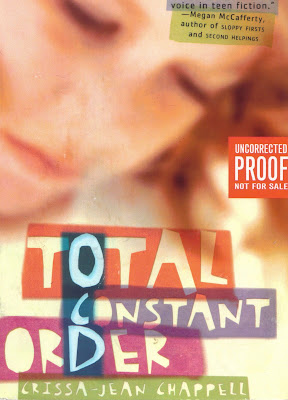Do you consider yourself a born writer?
No. In fact, when I was a child I hated to read. School book reports were a nightmare. Even though my teacher in eighth grade sent my poem, “Stars”, to a high school anthology, and it was published, I hated to write. I never would have imagined that someday I’d do just that.
When did you decide to become an author?
I don’t believe I consciously decided to become an author, but when I started reading to my sons, I discovered books were fun and entertaining, and I learned a lot from them. I also became a teacher and read to my students, mostly Newbery and Caldecott winners. Perhaps this is where the idea that I might write began. The June 2007 issue of The Writer magazine contains my breakthrough article.
I know you write young adult fiction. Is there any other genre you enjoy working on?
I write middle grade, too, and have tried a couple of picture books.
Tell us about your latest release. What is it about? What inspired you to write  such a story?
such a story?
Rebel in Blue Jeans is due out sometime in 2007 in trade paperback. Sixteen-year-old Rebel Ferguson is having a bad year. She has to deal with her mother who has run away with the drummer in a rock band, her father who has started drinking, the boy on the neighboring ranch who suddenly wants to be more than a friend, and a handsome college guy with a bad reputation who has taken an interest in her.
We read a lot about divorce and how it affects the children, especially younger ones. I decided to write about the influence of divorce on teenagers, at least on one teen.
When working on a novel, what is your schedule like? How long does it usually take you to finish a full-length book? Do you edit as your write or do you cough up the first draft and leave the polishing for later?
I’m a morning person and try to write from 9 am to noon. My brain stops after that, and I usually work on promo or do research in the afternoons. I write slowly because I edit as I go along. I hate to do it that way, but I can’t seem to get past a paragraph or a sentence until it makes sense. I can’t just jot down my thoughts, which would speed things up. I have to watch the research, too, or I’ll spend the morning reading all sorts of interesting articles on the Internet. I’ll use some of it, but it could wait until later. There’s really no set time it takes me to finish a book. I started my recent wip in May 2006, finished the rough draft in September 2006. The first revision took from September 2006, to March 2007. I’ve already added a stack of Post-it notes for ideas for the next edit. This story is resting now, while I work on my middle grade. More edits will follow. How many I haven’t a clue.
Fledgling writers often try to emulate their favorite author’s style. Did you experience this when you first started writing? If yes, who was your role model?
I did and still do, to a point. I have to be careful, because when I read a book that I really like, I think I should write that way, and it messes up the story I’m working on. No one role model, in particular, just whomever I happen to be reading at the moment. Some authors I really like their style are Stephanie Meyer, Sarah Dessen, Scott Westerfeld, Jodi Picoult, Ally Carter, Gail Giles, Dean Koontz, and I could go on and on. I’m easily influenced.
With so many books published, how do you promote your work and still have time to write, or vice versa? Do you follow a planned writing/marketing schedule? Any tips you would like to share with other authors?
Promotion is hard for me. I’d rather be writing. Even though I taught elementary school children for years, I’m a shy person. My voice fades away into nothing when I’m talking to a group of people. To promote my books, I’ve sent brochures to local and area schools for school visits, because I’m comfortable speaking with children. I’m waiting for replies. Book signings at libraries and book stores are not so intimidating and actually fun. I’ve sold few books that way, however. I’m looking into an online blog tour that several authors have done. I’m working on a movie trailer, which may never be finished. I also donate my books to contests, such as Teens Read Too. Anything to get my books out there and in the hands of teen readers. I’ve tried local festivals, but the booth rental was more than the profit I made from my books.
As far as schedules, I usually write Monday through Friday and work on promotion on Saturday. Some weekday afternoons I type letters to mail and make brochures. I order bookmarks, pencils, and other giveaways.
Tips: All I can say is try different things to see what works. Contact area newspapers, radio stations, and TV stations. (Next on my to-do list.)
Any upcoming books on the horizon?
Yes. Caves, Cannons, and Crinolines should be out soon in e-book. The story is set in Vicksburg, Mississippi, when the city was under siege during the Civil War. Also, my first middle-grade novel, I Live in a Doghouse, is under contract. One day this little voice whispered in my ear, “I live in a doghouse.” Of course I had to ask him why. And the story developed from there.
Do you have a website where readers may find more about you and your work?
My Web site is
www.beverlystowemcclure.comMy blogs are:
www.beverlyjean.livejournal.com and
www.myspace.com/beverlywriterWhat advice would you give to those young adult fiction authors who are trying to break into print?
Never give up. Write your story. Don’t try to write another Harry Potter. Edit, edit, edit. If you’re in a critique group, let them read your manuscript. (I’m not.) Search the markets. Even if a house is closed to submissions, sometimes they will read a query. Check message boards, such as the SCBWI for updated information on publishing houses. Then mail it and get busy on your next work.
If there was one book you’d recommend as absolute read for aspiring young adult fiction authors, what would that be?
That’s tough. There are so many good ones. I like Writing for Young Adults by Sherry Garland.
Please leave us with some words of wisdom.
Whether you’ve chosen to be a writer or writing has chosen you, write the best story you can write. Children deserve nothing less. Your reward is not the money (though that would be nice), but receiving that letter from a child, telling you how much he/she likes your book and how he/she relates to the main character.
Interview by Mayra Calvani








.jpg)


